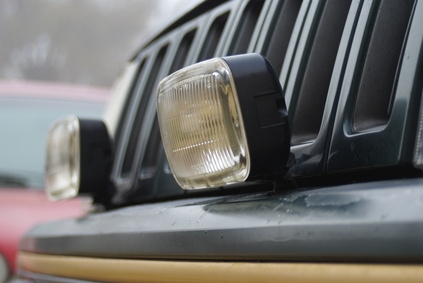
The Jeep Cherokee was manufactured by Chrysler for nearly 20 years before it was replaced by the Jeep Liberty. Even so, the Cherokee remains a popular Jeep model. One of the reasons for this is the Cherokee's compact and reliable unibody design, which is different from the heavy body-on-frame SUVs that were manufactured when the Cherokee was introduced. Noise coming from the alternator when the Jeep is running or a noticeable lack of power are signs the alternator is experiencing trouble.
Lift the hood and locate the battery. Remove the cover if there is one. The battery has positive and negative terminal posts. The positive is red and has a "plus" sign beside it. The negative is black and has a "negative" sign beside it.
Attach the positive lead of the voltmeter to the positive terminal post on the battery and the negative lead to the negative battery post. Look at the voltmeter's screen and record the reading it displays. This is the battery's voltage. It's a good idea to know whether or not the battery is strong while troubleshooting the alternator. A healthy battery should read between 12.5 and 12.8 volts.
Prop the voltmeter up and crank the Jeep. Record the reading on the screen of the voltmeter. With the engine running, the alternator supplies electricity to the battery; therefore, the voltmeter picks up the voltage from the alternator. It should read between 13.6 and 14.3 volts.
Listen for suspicious noises coming from the alternator. Noises can mean the alternator has a bent pulley system, shorted diodes or mechanical interference.
Check the battery connections for corrosion or excess movement. Poor connection prevents the circulation of power and forces the alternator to work too hard.